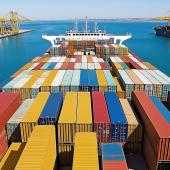The corrugated cardboard industry: plans for climate neutrality by 2050
FEFCO (the European Federation of Corrugated Cardboard Manufacturers) announced the launch of its Climate Neutrality Roadmap conducted by Climact.

In a context where consumer awareness and expectations around packaging are rising, and where climate change is becoming a major concern, FEFCO is proud to present the corrugated cardboard sector’s plan to achieve climate neutrality by the year 2050. This work responds to the EU Green Deal goal to cut greenhouse gas emissions by 80-95% by 2050.
The European corrugated cardboard industry is circular by nature and has always been committed to sustainable growth. The new ambition reflects a continuous effort to preserve the environment and reduce GHG emissions. Building on past achievements and thorough analytical work, the roadmap describes how the corrugated cardboard sector is committed to achieving climate neutrality. It lays out key milestones, the most plausible scenarios, the required investments, and the necessary policy measures to reach this goal.
The key findings show that the corrugated cardboard industry can reduce its carbon footprint emissions through actions directly within its control by 2050 compared to business as usual (BAU) with actions like the improvements in material efficiency and circularity that would reduce the footprint by 3,3 Mt CO2eq. (or 19%) and further improvements in energy efficiency and decarbonisation of the energy mix to reduce the footprint by an additional 2,8 Mt CO2eq. (or 16%) by 2050 .
Looking beyond direct action, collective engagement of the wider value chain will enable corrugated cardboard to become carbon neutral and even carbon negative. Notably, the bulk of the reductions must be achieved upstream, and, in particular, by reducing the climate footprint of paper production. Reduction of the paper sector (fossil) carbon footprint by 80% by 2050 (in line with the current paper industry roadmap) will allow the corrugated cardboard sector to achieve climate neutrality. Furthermore, if the paper sector fully phases out its fossil emissions, the corrugated cardboard sector would become a climate negative packaging material.

The ambitions of the corrugated cardboard sector’s Climate Neutrality Roadmap can only be achieved if the following enabling conditions are met:
- a predictable and stable regulatory framework to steer investments;
- the availability and affordability of climate-friendly energy carriers;
- an adequate and robust energy infrastructure;
- policies and measures to enable the decarbonisation of the paper sector;
- policies and measures to enable the decarbonisation of the transport sector;
- recycling policies to improve quality of waste streams.
The FEFCO roadmap reflects a credible plan that can be implemented in the required timeframe, and shows the strong will of the industry to build a climate neutral future for corrugated cardboard. Already the most recycled packaging material, with 88% recycled content, climate neutral corrugated cardboard will enable sustainable supply global supply chains for the long-term. Moreover, climate neutrality by 2050 is the way that the European Commission foresees its future growth strategy.
In this context, FEFCO Secretariat drives and assists the corrugated cardboard industry to enable climate neutrality in its manufacturing operations.

















